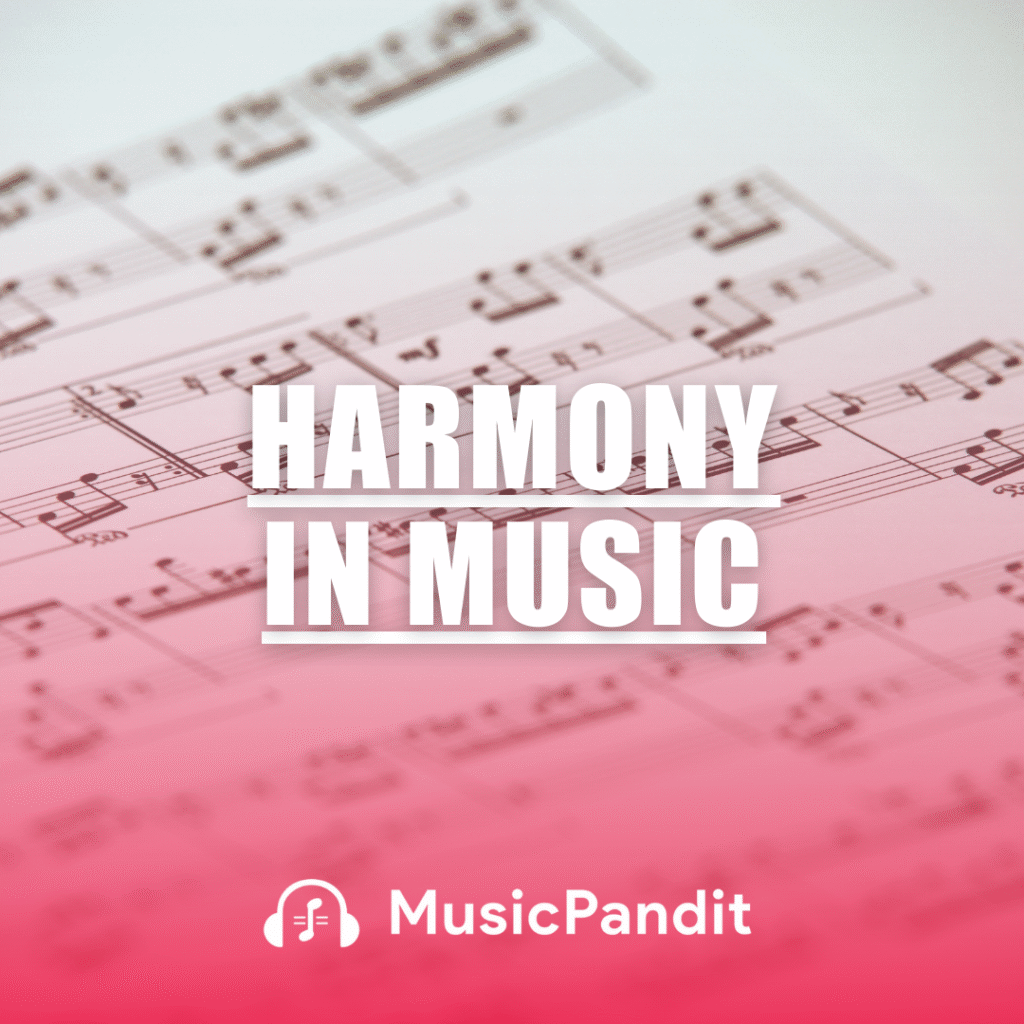Music is a universal language that conveys emotions, tells stories, and brings people together. One of the fundamental elements that give music its depth and richness is harmony. Understanding harmony can enhance your appreciation of music and improve your skills as a musician. This guide will introduce you to the concept of harmony, its importance, types, and how you can apply it in both instrumental and vocal music.
What Is Harmony?
In music, harmony refers to the combination of different musical notes played or sung simultaneously to produce a pleasing sound. While melody is the tune you hum, harmony adds layers and depth, enriching the overall musical experience.
The Importance of Harmony
Harmony plays a crucial role in music for several reasons:
- Emotional Depth: Harmony can evoke various emotions, from joy to sadness, by creating different moods.
- Musical Texture: It adds complexity and richness, making music more engaging.
- Support for Melody: Harmony complements and supports the melody, enhancing its impact.
Types of Harmony
Understanding the different types of harmony can help you recognize and create various musical effects.
1. Diatonic Harmony
Diatonic harmony involves chords built from the notes of a single key. For example, in the key of C major, the chords are constructed using only the notes C, D, E, F, G, A, and B.
2. Chromatic Harmony
Chromatic harmony includes chords that use notes outside the primary key, adding color and tension to the music.
3. Parallel Harmony
Parallel harmony occurs when two or more lines move in the same direction, maintaining a constant interval between them. This technique is often used to create a rich, cohesive sound.
4. Close and Open Harmony
- Close Harmony: Notes are placed close together, usually within an octave. This style is common in barbershop quartets and vocal ensembles.
- Open Harmony: Notes are spread out over a wider range, often more than an octave, providing a broader sound.
How to Create Harmony
Creating harmony involves understanding chords, intervals, and the relationship between notes.
1. Learning Intervals
An interval is the distance between two notes. Familiarizing yourself with intervals like thirds, fifths, and sevenths is essential, as they form the building blocks of harmony.
2. Building Chords
Chords are groups of notes played together. The most basic chord is the triad, consisting of three notes:
- Major Triad: Root, major third, perfect fifth.
- Minor Triad: Root, minor third, perfect fifth.
3. Practicing with Scales
Scales provide a framework for harmony. Practicing scales helps you understand which notes sound good together. Start with the major and minor scales, and explore how chords are built from these scales.
Harmony in Vocal Music
Harmony is vital in vocal music, enhancing the depth and emotion of performances.
1. Choirs and Ensembles
In choirs, singers are divided into different sections (soprano, alto, tenor, bass), each singing different notes that harmonize to create a rich sound.
2. Barbershop Quartets
Barbershop music features four-part harmony with a distinctive structure:
- Lead: Sings the melody.
- Tenor: Harmonizes above the lead.
- Baritone: Completes the chord, usually below the lead.
- Bass: Sings the lowest harmonizing notes.
This style emphasizes close harmony and is known for its rich, consonant sound.
Harmony in Instrumental Music
Instruments also play a significant role in creating harmony.
1. Orchestras and Bands
Different sections (strings, woodwinds, brass, percussion) play parts that harmonize with each other, creating a full, layered sound.
2. Quartal and Quintal Harmony
Some modern music utilizes quartal (built on fourths) and quintal (built on fifths) harmony, moving away from traditional third-based chords to create unique sounds.
Benefits of Studying Harmony
Understanding harmony offers several benefits:
- Improved Musicality: Enhances your ability to create and interpret music.
- Better Collaboration: Aids in playing with others, as harmony is often a group effort.
- Enhanced Listening Skills: Develops your ear to recognize and appreciate complex musical structures.
Teaching Harmony to Young Students
Introducing harmony to young learners can be engaging and fun.
1. Use of Movement and Games
Incorporating movement helps internalize rhythmic and harmonic concepts. Methods like Dalcroze Eurhythmics teach musical concepts through movement, aiding in the development of a natural musical expression.
2. Singing and Solfège
Teaching songs and using solfège (do, re, mi) helps students understand pitch relationships and harmony. The Kodály Method emphasizes the importance of singing and solfège in music education.
3. Interactive Instruments
Using instruments like xylophones and metallophones allows students to experiment with creating harmonies. The Orff Schulwerk approach encourages exploration and improvisation with these instruments.
Related Topics
Exploring related musical concepts can deepen your understanding of harmony.
1. Counterpoint
Counterpoint involves combining independent melodies to create harmonious music. It’s a technique used extensively in classical compositions.
2. Chord Progressions
Understanding how chords move from one to another helps in composing and improvising music.
3. Music Theory
A solid grasp of music theory provides the foundation needed to understand and apply harmonic principles effectively.
Conclusion
Harmony is a fundamental aspect of music that adds depth, emotion, and complexity. By studying harmony, you can enhance your musical skills, whether you’re singing in a choir, playing an instrument, or composing your own pieces. Remember, the journey of learning harmony is ongoing, and the more you explore, the more rewarding your musical experiences will become.
The post Harmony in Music appeared first on Music Pandit Online Music School.
Source:https://www.musicpandit.com/resources/articles/harmony/

